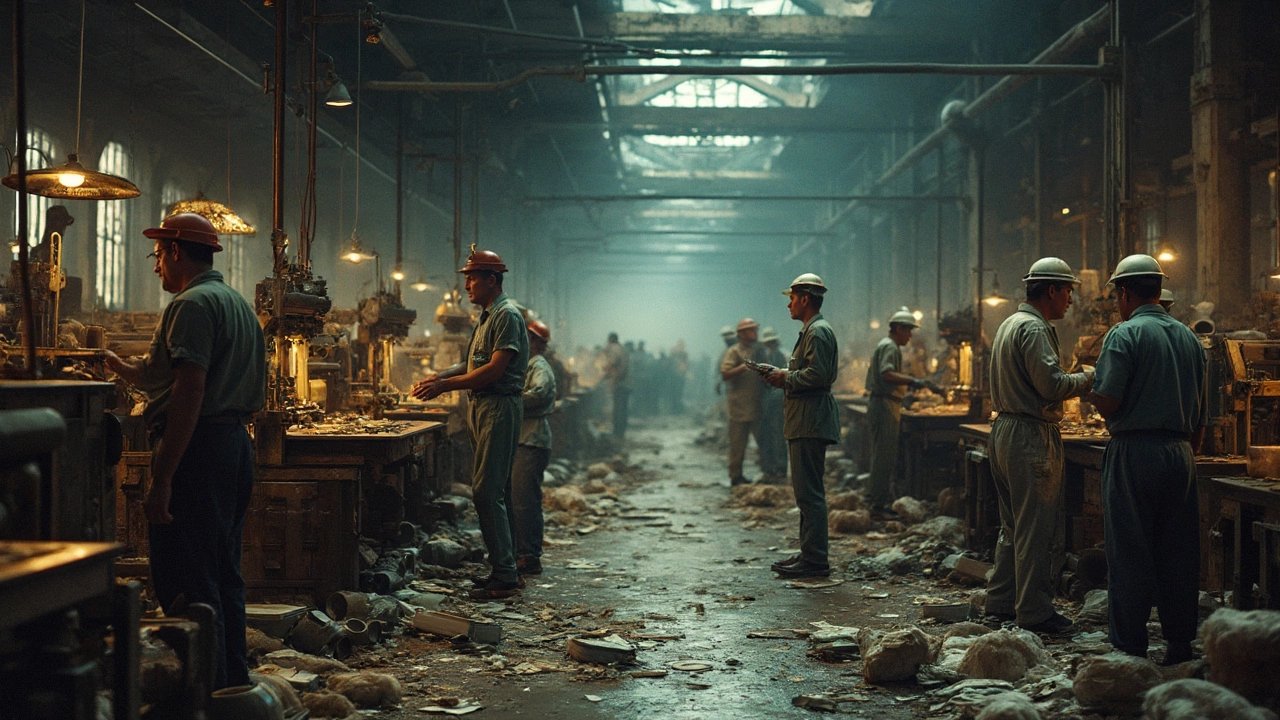Disadvantages in Manufacturing: Real‑World Challenges You Can’t Ignore
When you hear ‘manufacturing,’ you might picture booming factories and endless growth. But every upside comes with a downside. Knowing the real disadvantages helps you avoid costly mistakes and keep your operation running smoothly.
Cost and Energy Drawbacks
Running a plant burns a lot of money. Energy bills are a big slice, especially when you need high‑temperature ovens or heavy machinery that never sleeps. Even a small rise in electricity rates can shave profit margins thin. Add to that the price of raw materials—global spikes in steel, copper, or plastics can cripple budgets overnight.
Skill Gaps and Labor Issues
Finding workers who understand modern CNC machines, robotics, or IoT systems is harder than it sounds. Many factories rely on old‑school skills that don’t match today’s tech‑driven processes. When you can’t fill those gaps, production slows, quality slips, and overtime costs climb.
Regulatory compliance is another headache. Safety standards, emission limits, and export rules change frequently. Staying compliant means paperwork, audits, and sometimes pricey upgrades to equipment. Miss a deadline and you risk fines or production shutdowns.
Environmental impact is a growing concern. Factories that dump waste or emit greenhouse gases face stricter rules and public backlash. Investing in cleaner tech is good business, but the upfront cost can be a hurdle for small and medium‑sized players.
Supply chain disruptions are more common than you think. A delayed shipment of a single component can halt an entire line. Natural disasters, port strikes, or geopolitical tensions can ripple through your schedule, leaving you scrambling for alternatives.
Lean manufacturing promises efficiency, but it also introduces the “seven wastes” that many overlook: overproduction, waiting, transport, excess inventory, motion, defects, and unused talent. Ignoring these wastes can erode the very savings lean aims to create.
Maintenance downtime is another silent loss. Machines need regular check‑ups; skip them and you risk unexpected breakdowns that cost more in repairs and lost output than a well‑planned service schedule.
Finally, market volatility can turn profitable products into loss leaders overnight. Shifts in consumer demand, price wars, or new entrants can leave you with excess inventory that ties up cash and storage space.
Knowing these disadvantages doesn’t mean you have to accept them. It means you can plan ahead, invest wisely, and build a resilient operation that turns challenges into opportunities.

Manufacturing Disadvantages: What You Don’t Hear About Government Schemes
Manufacturing comes with big promises, especially when government schemes get involved. But there’s a flip side that rarely gets the spotlight. This article breaks down the real disadvantages of manufacturing, focusing on what these government schemes might not tell you upfront. From hidden costs to unpredictable hurdles, you’ll see what really goes on behind the factory walls. Find out how practical tips and facts can help you dodge the common pitfalls.
